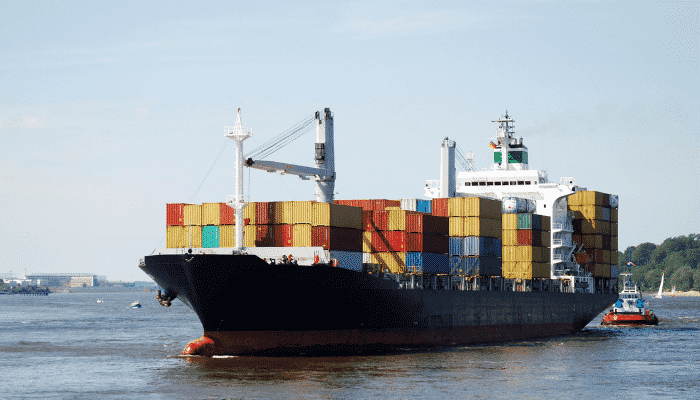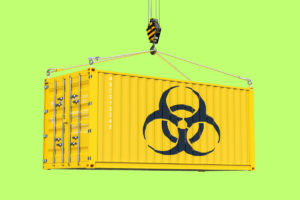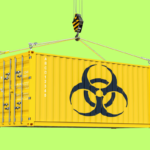What Are Liner Services and Tramp Shipping?
A ship that regularly sails on a fixed route following a schedule is known as a liner. This is because they have regular ports of call.
On the other hand, we have ships that do not follow a schedule or have regular routes. Such ships are called tramp services.
Typically, tramp services are designed to transport cargo, while liner services cater to cargo and passengers separately.
Liner services are preferred by businesses that have cargo for regular or frequent dispatches, while those organizations that do not have regular shipments normally go for tramp services.
It is quite obvious from these facts that liner services are more expensive than tramp shipping.
So why go for an expensive option when a cheaper one is available? Let us take a look.

Liner Services
Liner services are most commonly associated with container cargo. However, such services also include Roll-on Roll-off (RoRo) services for automobiles, carriage of bulk cargo, break-bulk cargo, oil-tankers, LNG tankers, transport of passengers, etc.
The sailing of these vessels follows a fixed shipping timetable. Also known as a sailing schedule, it provides details on the sailings of ships between ports. For example, it could be a weekly, fortnightly, or monthly timetable subject to regular updates.
Sailing schedules are normally published by the shipping companies that operate liner services. However, it is also available on various specialized and trusted websites.
A shipping schedule can be checked by vessel, by port of call, or by routing. It allows shippers or business people to analyze the best routes and transit times to plan their shipments accordingly.
Liners are obliged to follow the dates and routes shown on the shipping schedule unless they cannot do so due to natural calamities, epidemics, war, strikes, etc. These unforeseen and uncontrollable circumstances are known as Force Majeure.
However, it is not unusual to see sailing schedules omitting certain regular, scheduled ports. Other than force majeure, the reasons for such blank sailings could be due to lack of cargo to load and unload from such ports, extraordinary delays at any of the previous ports, unexpected maintenance stops for the vessel, etc.
Typically, shipping lines add or omit ports depending on cargo traffic.
Liners normally try and maintain their schedules as far as possible to uphold their goodwill and standing in the industry.
Most liner fleets these days operate powerful, modern vessels that meet the demand for speed and punctuality. As a result, the rates offered by these liner services are also more or less stable.
The regularity of services and stable rates help businesses to plan and cost their outbound or inbound consignments.
To tap the market further, sometimes different liners come together and enter into an agreement or form an alliance. They are formed mainly to eliminate low pricing and offer a wider coverage of destinations to customers.
Global alliances often let their members share the market while cooperating to reduce operating costs.
Currently, 3 major global shipping alliances control more than 80% of the global container cargo traffic. They are as follows:
- 2M – MSC, Maersk, and HMM (formerly Hyundai Merchant Marine)
- THE Alliance – Hapag Lloyd, NYK, Yang Ming, MOL, K-Line
- Ocean Alliance – CMA CGM, COSCO, OOCL, and Evergreen
These strategic tie-ups agree to operate their vessels along agreed routes and share cargo space between them.
Tramp Services
Ships that follow no fixed schedule or route are known as tramp services. When compared with liner services, they are usually much slower.
Tramp services are often considered unstable and unorganized. However, they may have fixed clients who go for the lower rates offered.
Information on the sailing of such vessels is published by the respective shipping companies and is also available online on public websites.
A tramp ship may suddenly show up on a shipping timetable when enough cargo is needed to run a schedule. In such cases, when it has more cargo space available, it may accept other cargo from customers for transport to ports on its schedule.
Tramp services are not very regular, and most of them do not offer any value-added services that may be expected from certain liner services.
Most tramp ship services operate as simple organizations, and therefore their overheads are considerably less. They pass on savings in these areas to their customers in the form of lower rates. The cargo rates on tramp services are often less when compared with those of liner services.
Tramp ships do not follow scheduled routes and mostly cover ports from where they have cargo to load or unload. Having said that, cargo such as automobiles, bulk or break-bulk cargo, oil, or LNG are also transported on tramp ships. In these cases, tramp ships are chartered by the client and covered by a charter party.
Tramp ships are chartered by clients depending on their requirements, and hence it may usually be voyage charters (between specific ports) or time charters (for a period of time).
Tramp services are convenient, economical, and flexible for certain types of businesses.
Tramping business does not have as many entry-barriers as liner services do, and for this reason, there are several tramp service operators the world over. However, for the same reason, there is also tough competition between operators of tramp services.
Tramp services may own a single ship or have a fleet of carriers of different capacities. In the case of the latter, they may have a large organization to manage the large operations.
To make up for the low rates, operators of tramp services have to ensure that their vessels are always engaged. They try to get business from clients who have cargo to load from a port of discharge or vice-versa. They try to attract customers by offering discounts on their rates based on frequency or volumes whenever possible.
Documentation
In cargo shipping, the main documents are the bill of lading, commercial invoice, packing list, insurance certificate, and the certificate of origin (if the cargo is transported between different countries). These remain the same for all types of sea shipments. However, in tramp shipping, the charter party may state the requirement for other additional documents to ship the cargo.
As of 2021, an estimated 56,000 merchant vessels sail the high seas, of which a good number are tramp vessels.
You might also like to read:
- Understanding Transit Time in Shipping
- What are Bonded Goods in Shipping?
- What is Freight Collect in Shipping?
- What Are Stack Dates in Shipping?
- What is Full Truckload in Shipping?
Disclaimer: The authors’ views expressed in this article do not necessarily reflect the views of Marine Insight. Data and charts, if used in the article have been sourced from available information and have not been authenticated by any statutory authority. The author and Marine Insight do not claim it to be accurate nor accept any responsibility. The views constitute only the opinions and do not constitute any guidelines or recommendations on any course of action to be followed by the reader.
Do you have info to share with us ? Suggest a correction

About Author
Hari Menon is a Freelance writer with close to 20 years of professional experience in Logistics, Warehousing, Supply chain, and Contracts administration. An avid fitness freak, and bibliophile, he loves travelling too.
Latest Maritime law Articles You Would Like:
Latest News
- What are Logistics Risks?
- How Port and Terminal Operators Can Control Emissions?
- Minimum Quantity Commitment (MQC) and Liquidated Damages in Container Shipping: Concept and Relevance
- MARPOL (The International Convention for Prevention of Marine Pollution For Ships): The Ultimate Guide
- The Ultimate Shipping Container Dimensions Guide
- A Comprehensive Overview of IMDG Code for Shipping Dangerous Goods
Subscribe To Our Newsletters
By subscribing, you agree to our Privacy Policy and may receive occasional deal communications; you can unsubscribe anytime.















